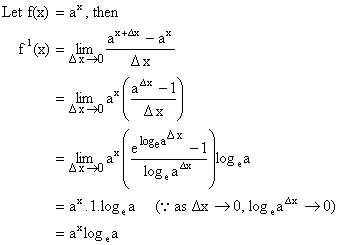differentiation-3
3) ![]() Why?
Why?
Proof:
Let y = f1(x) + f2(x), Where f1(x) and f2(x) are differentiable functions of x.
Then
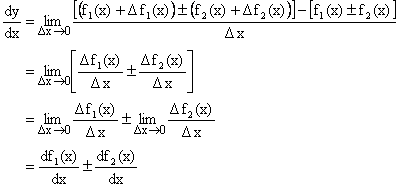
Thus ![]() .
.
4) ![]() Why?
Why?
Proof:
Let y = f1(x).f2(x) where both f1(x) and f2(x) are differentiable function of x.



![]()
5)  Why?
Why?
Proof:
Let ![]() , where f1(x) and f2(x) are differentiable functions at all points in its domain and f2(x) ¹ 0.
, where f1(x) and f2(x) are differentiable functions at all points in its domain and f2(x) ¹ 0.
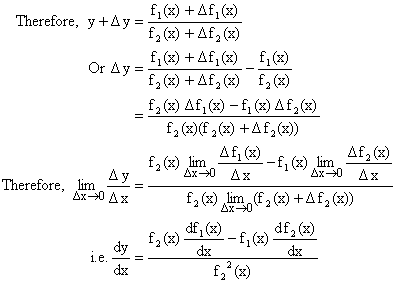

6) ![]() Why?
Why?
Proof:
Let y = f (t), t = g(x)
Then y = f (g(x)) is a function of x.
Dy = f (t+Dt) - f (t)
And Dt = g (x+Dx) - g(x)

Assuming that for sufficient small values of Dx, Dt ¹ 0 this will necessarily be the case if ![]() then since g is differentiable it is continuous and hence when Dx®0, x+Dx®x any g(x+Dx) ® g(x).
then since g is differentiable it is continuous and hence when Dx®0, x+Dx®x any g(x+Dx) ® g(x).
Therefore t+Dt®t and Dt®0, since Dt ¹ 0 and Dx®0 we may write,
![]() .
.
Clearly f and g are both continuous functions because they are differentiable thus Dt®0 when Dx®0 and Dy®0 when Dt®0.
![]()
Hence ![]()
Standard Formulae of Differentiation:
1) ![]()
Proof:
Let ![]()

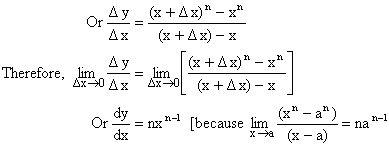
Thus ![]()
2) ![]()
Proof:
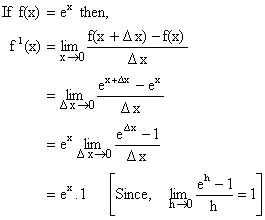
Thus ![]()
3) ![]()
Proof:
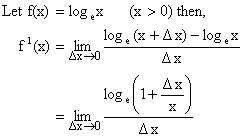
![]()
So, ![]()
4) ![]()
Proof:
